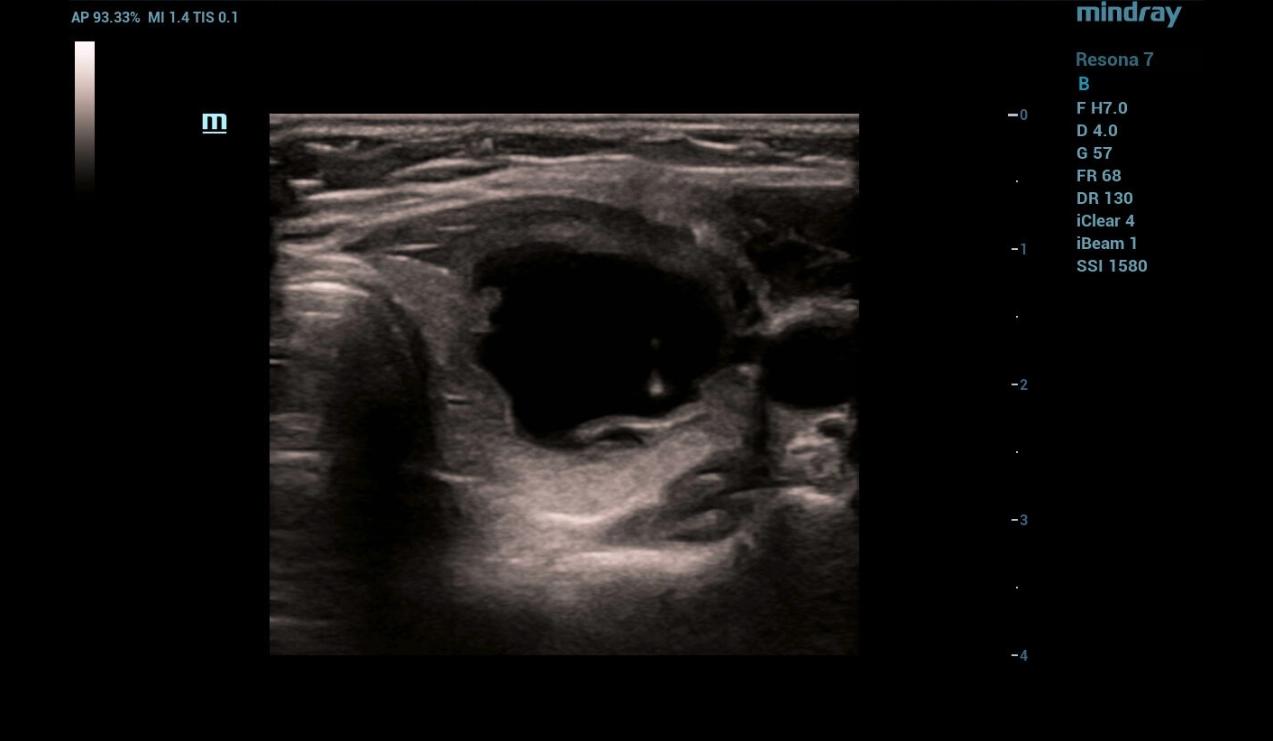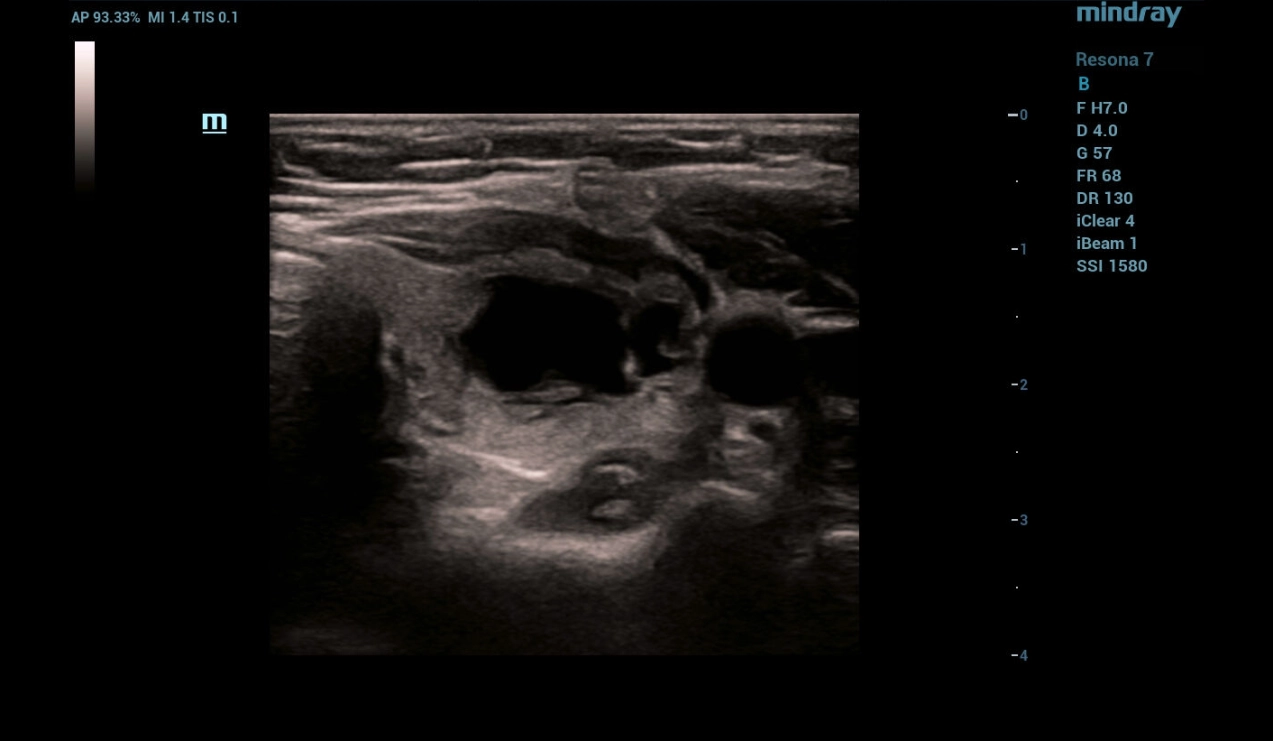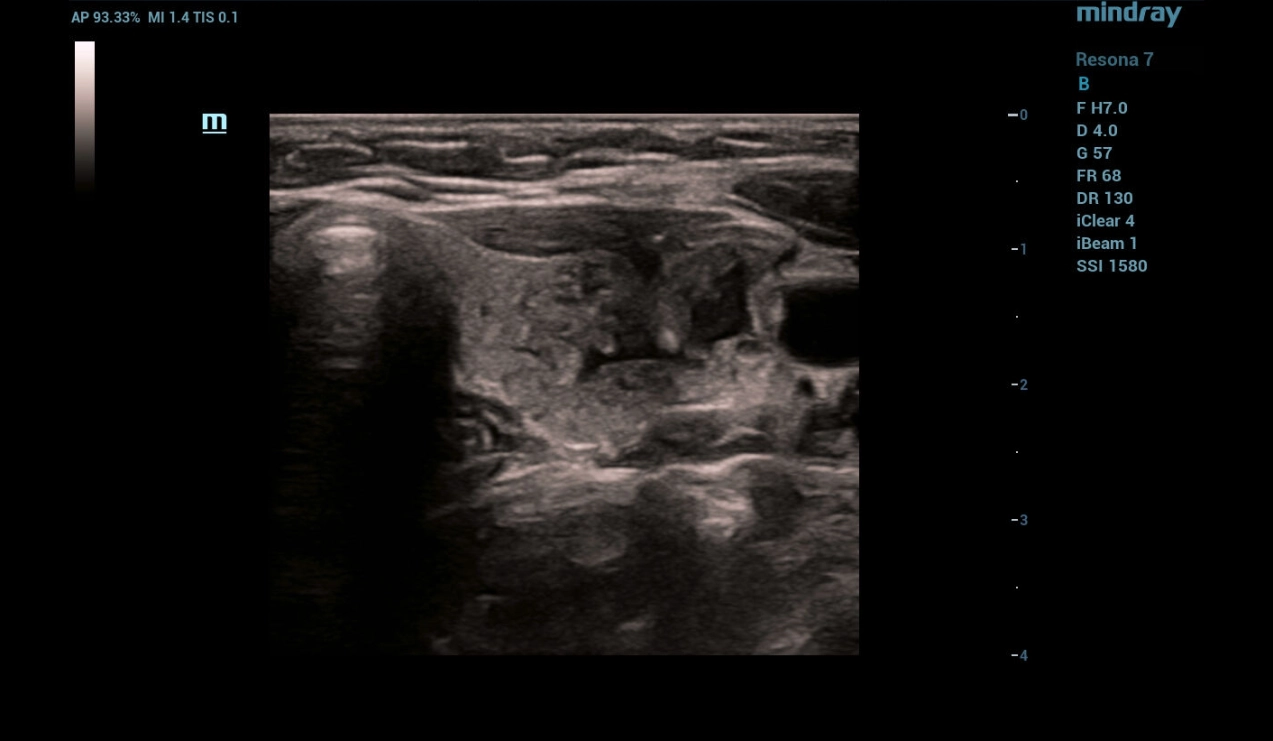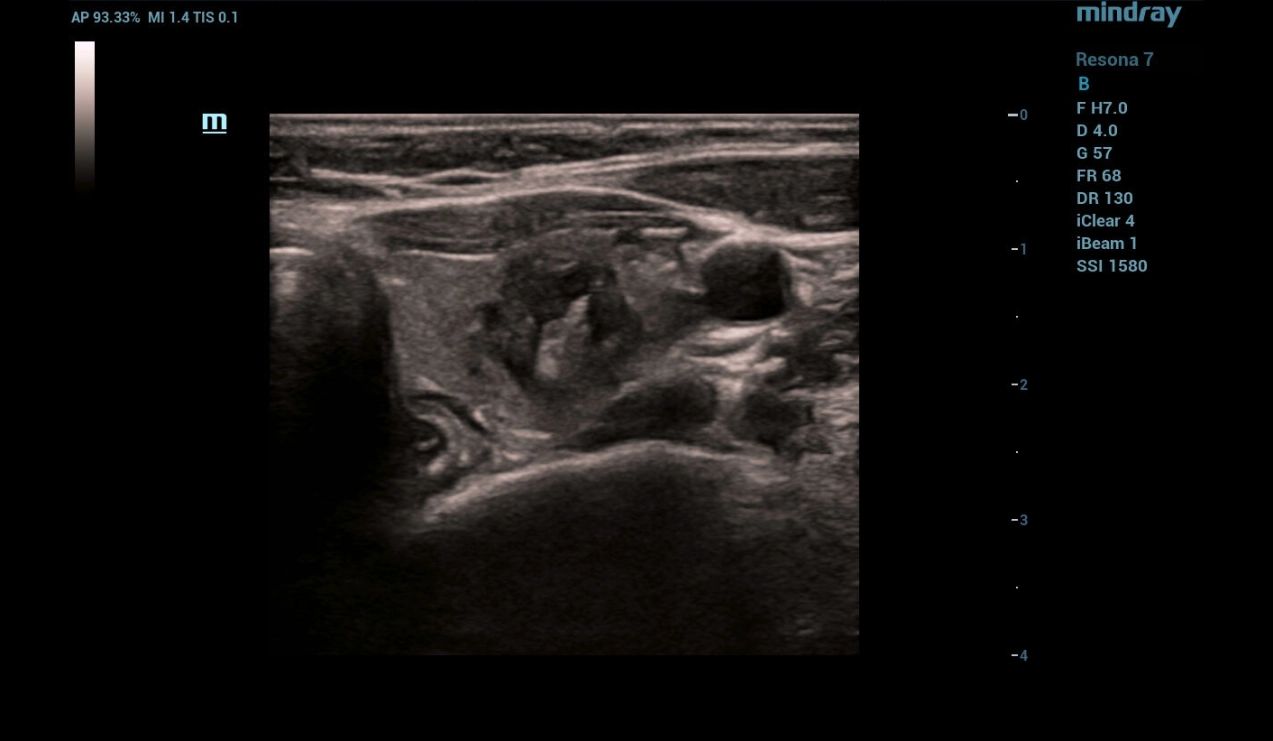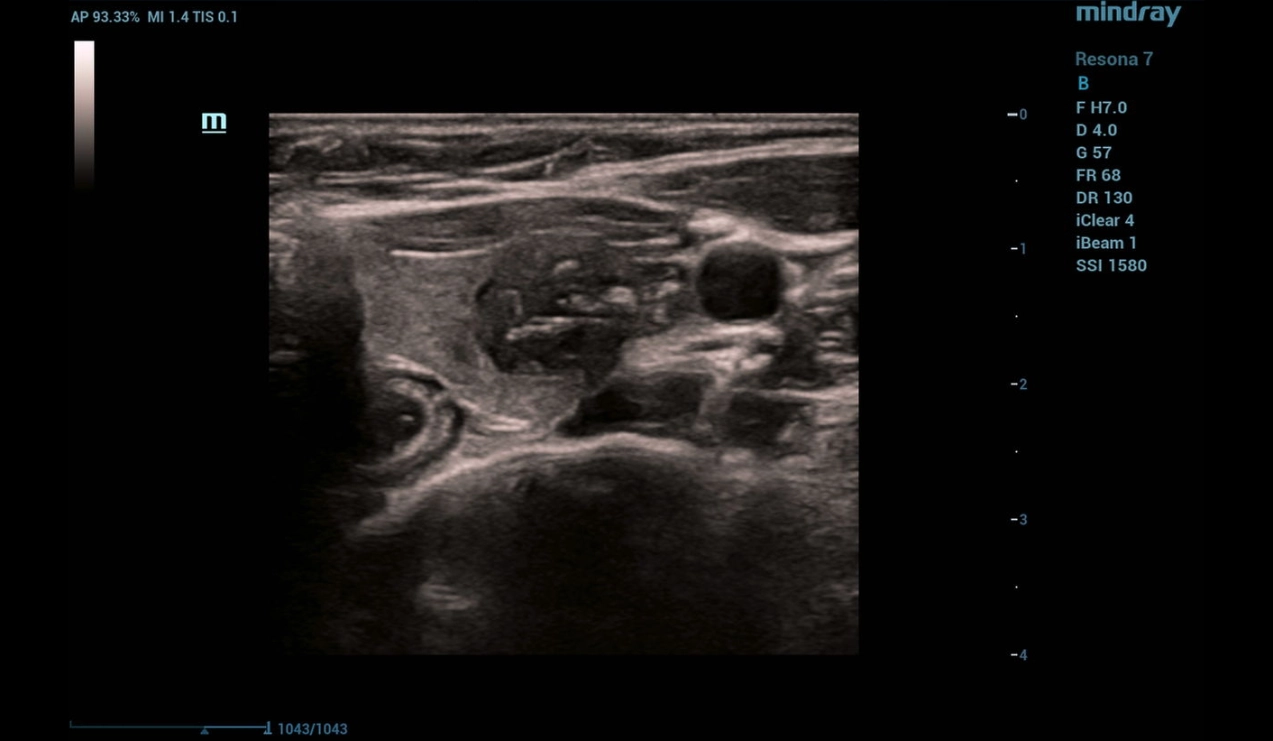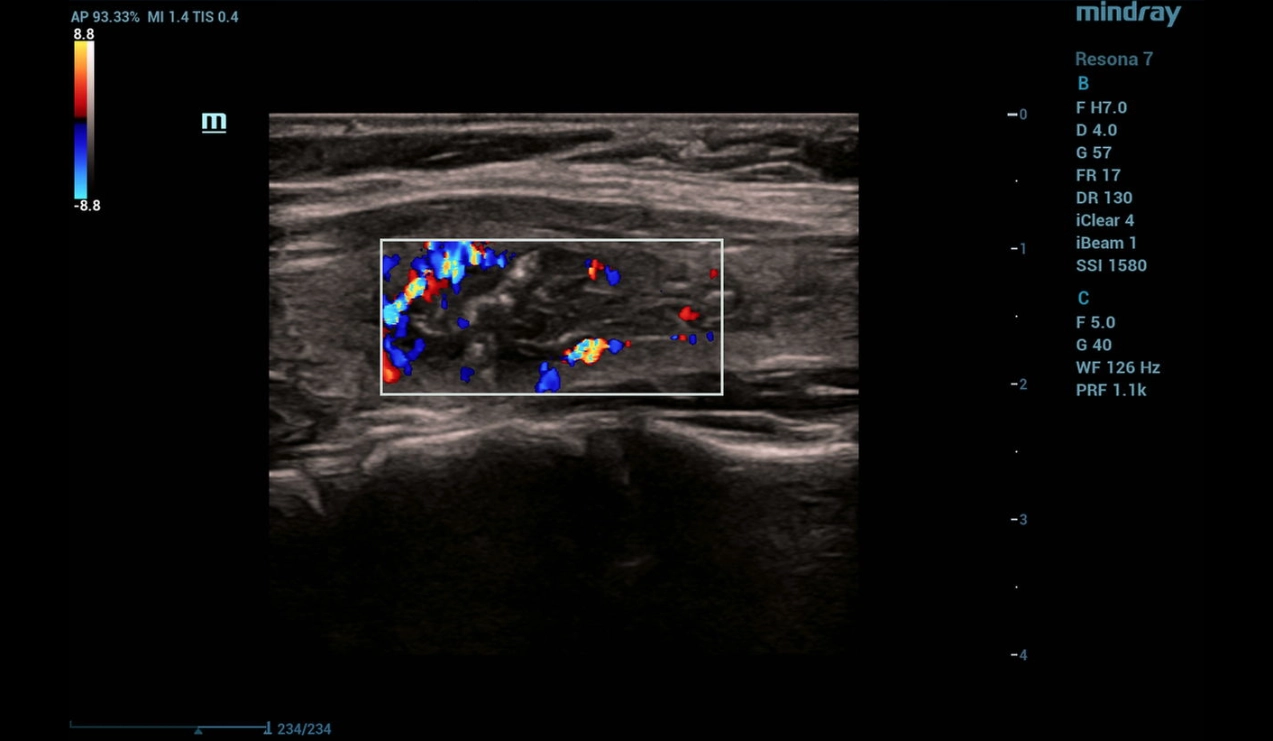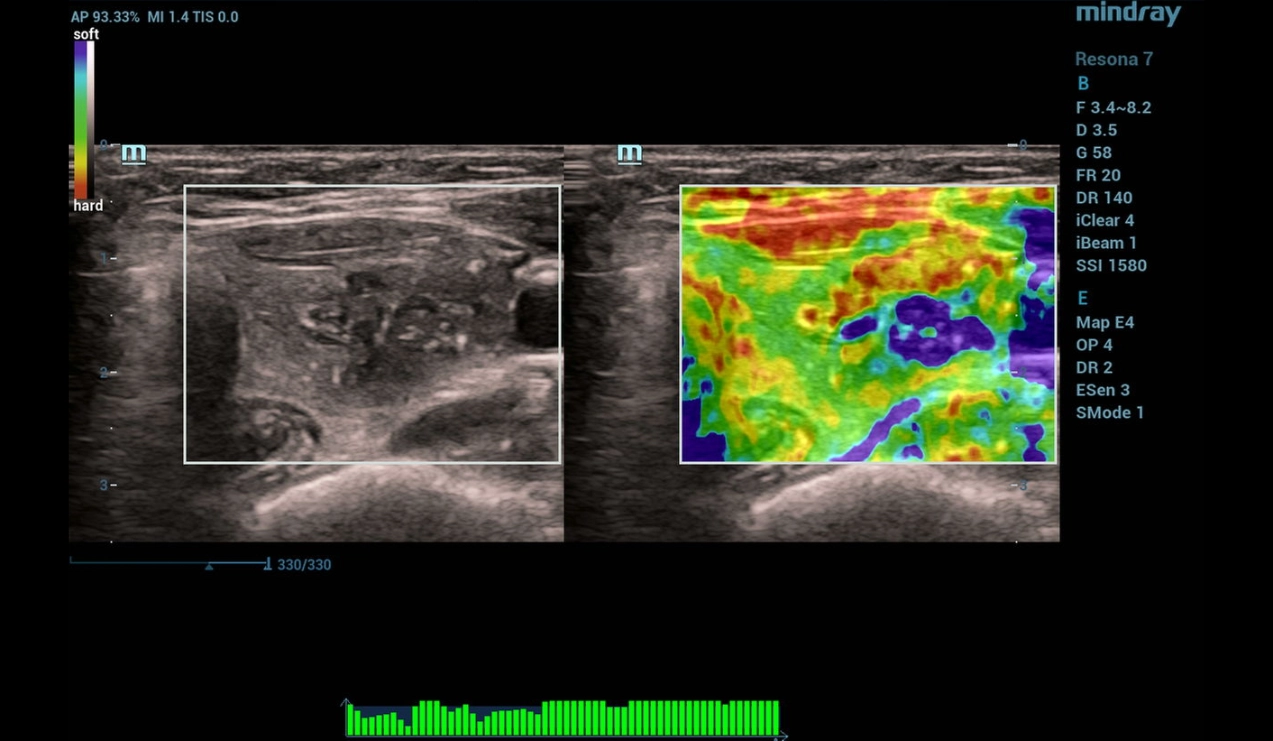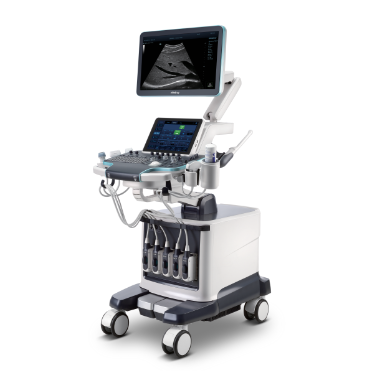Ultrasound Journal 16 - Application of ultrasound-guided sclerotherapy in patients with focal cystic thyroid mass
By Tagil A.O., Borsukov A.V. [1] 2023-07-07
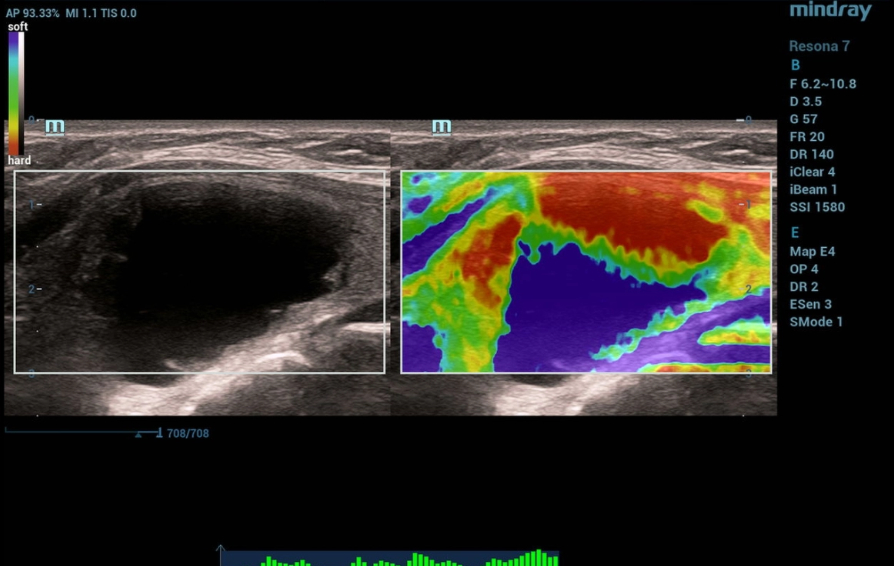
Key points
The use of ultrasound during minimally invasive interventions significantly increases the effectiveness of therapeutic measures and reduces the potential risk of possible complications both during the procedure and in the long-term period.
Introduction
Patient P., born in 1995, complained of a cosmetic defect on the front surface of the neck in the form of a bulging associated with a focal lesion of the thyroid gland. Laboratory indices: TSH - 2.1 mIU/L, free T4 - 14.51 pmol/ml, free T3 - 4.8 pmol/ml, calcitonin - 1.0 pg/ml. Fine-needle aspiration (FNA) biopsy results - benign mass (Bethesda 2).
B-mode and Color Flow Doppler (CFD)
Ultrasonography was performed on a Resona 7 ultrasound machine (Mindray, China) using a linear probe L14-5WU. A cystic focal mass of anechogenic structure measuring 24x28x38 mm with smooth clear contours was detected in the left lobe of the thyroid gland (Fig. 1, 2)
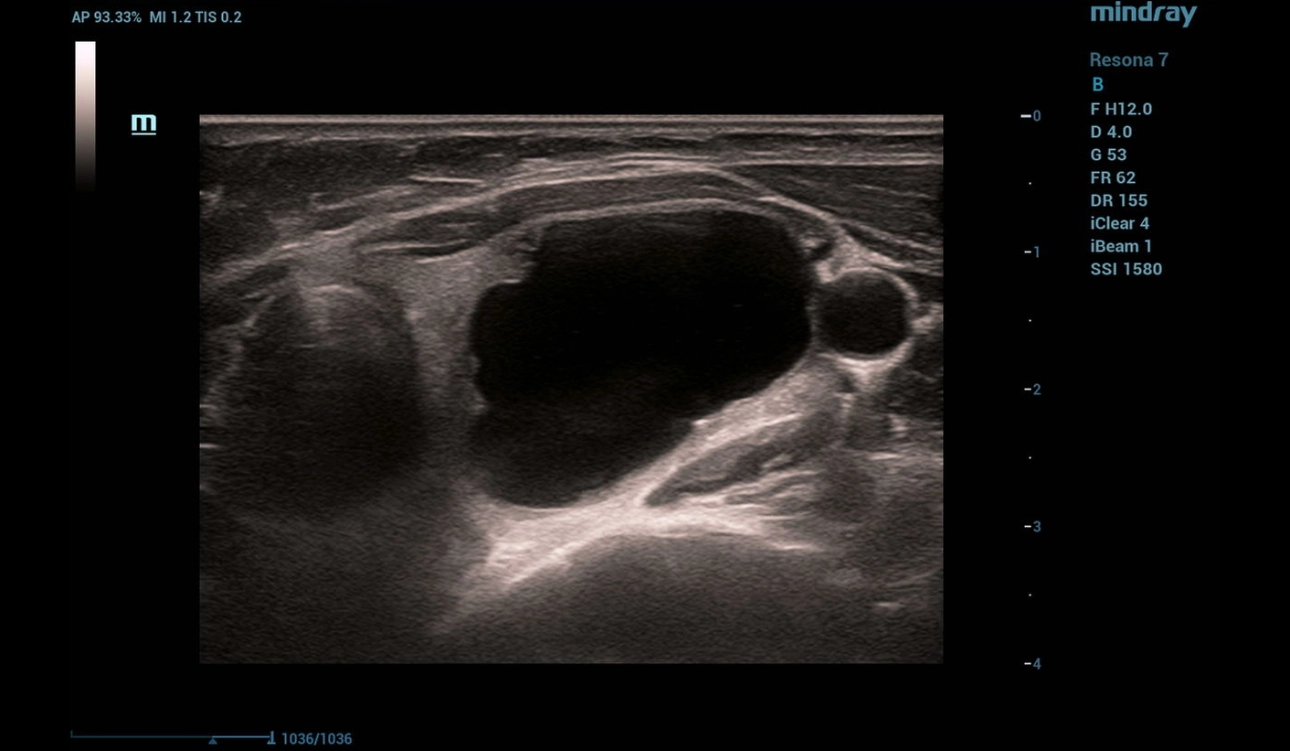
In Color Flow Doppler (CFD) there is no blood flow in the focal mass with the presence of single perinodular vessels (Fig.2)
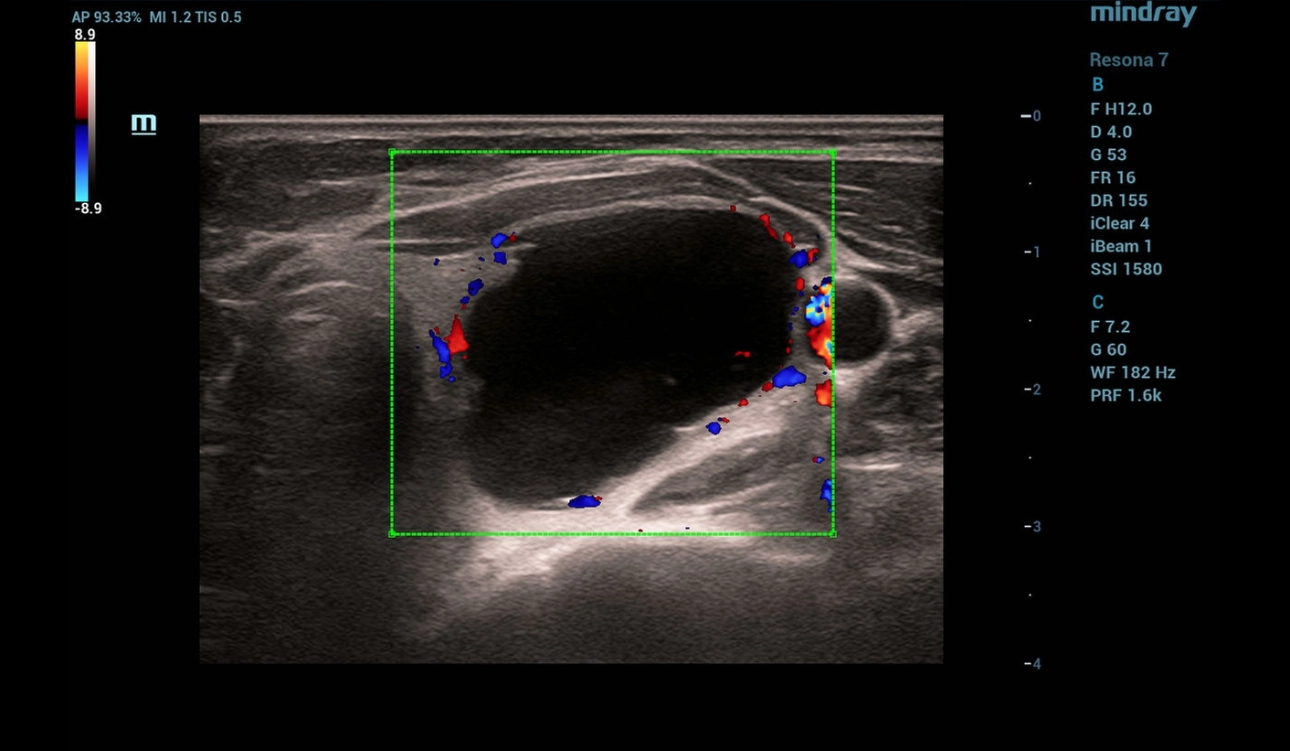
Strain elastography
Strain elastography identifies a tricolor structure (BGR sign - blue/green/red layers) of the focal mass, which is consistent with cystic contents (Figure 3).
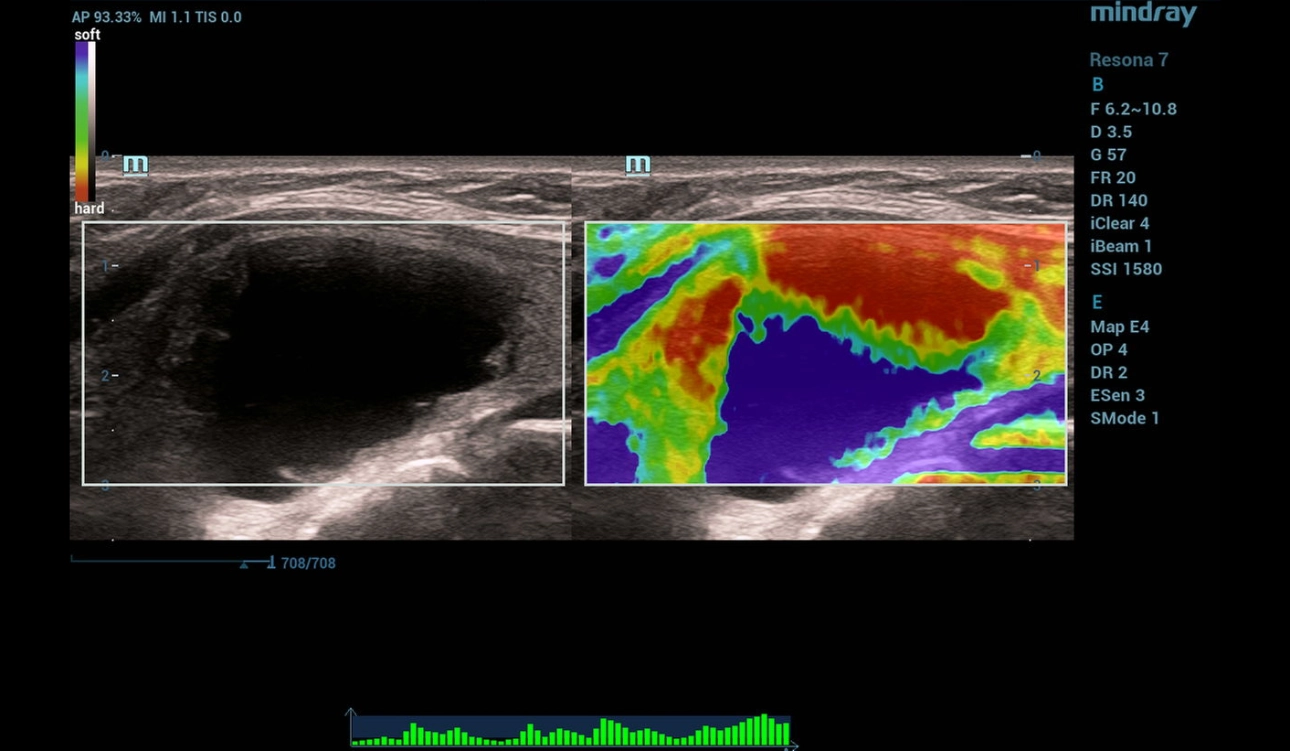
Discussion
Laboratory parameters
The patient's thyroid hormone levels are within acceptable limits.
B - mode, CFD
Multiparametric ultrasound examination of the thyroid revealed a cystic focal mass in the left lobe without signs of malignancy.
Strain elastography
On strain elastography, the focus had tricolor staining (BGR sign) consistent with a cystic mass.
Sclerotherapy
Complete evacuation of the cyst contents was performed under ultrasound navigation with the injection of 2.0 ml of sclerosant with the exposure of 4 minutes and its subsequent removal from the cyst cavity. On control examination, complete recession of the cystic neoplasm walls was determined.
[1] Problem Research Laboratory "Diagnostic Studies and Minimally Invasive Technologies", Federal State Budgetary Educational Institution of Higher Professional Education Smolensk State Medical University, Ministry of Health of Russia
